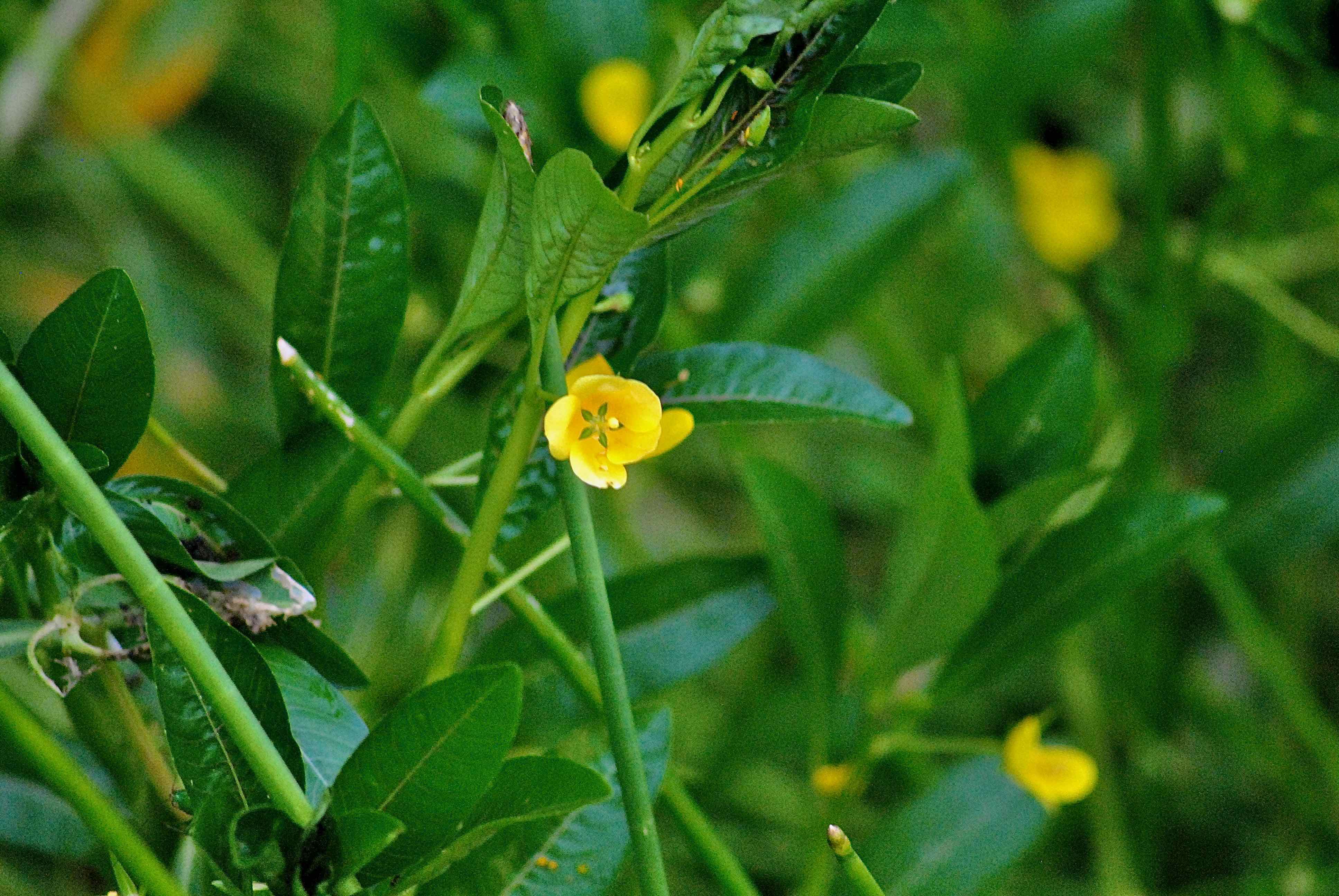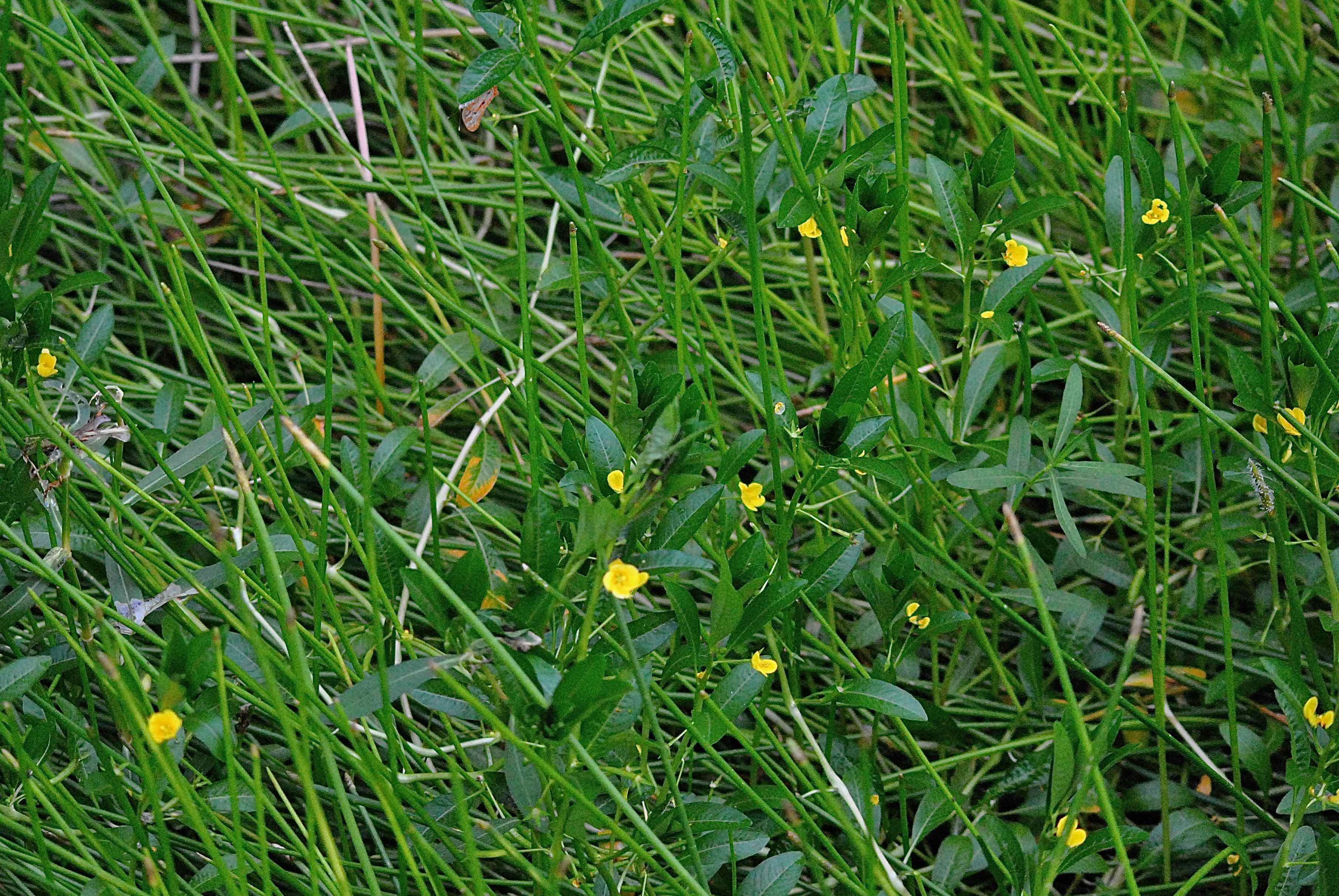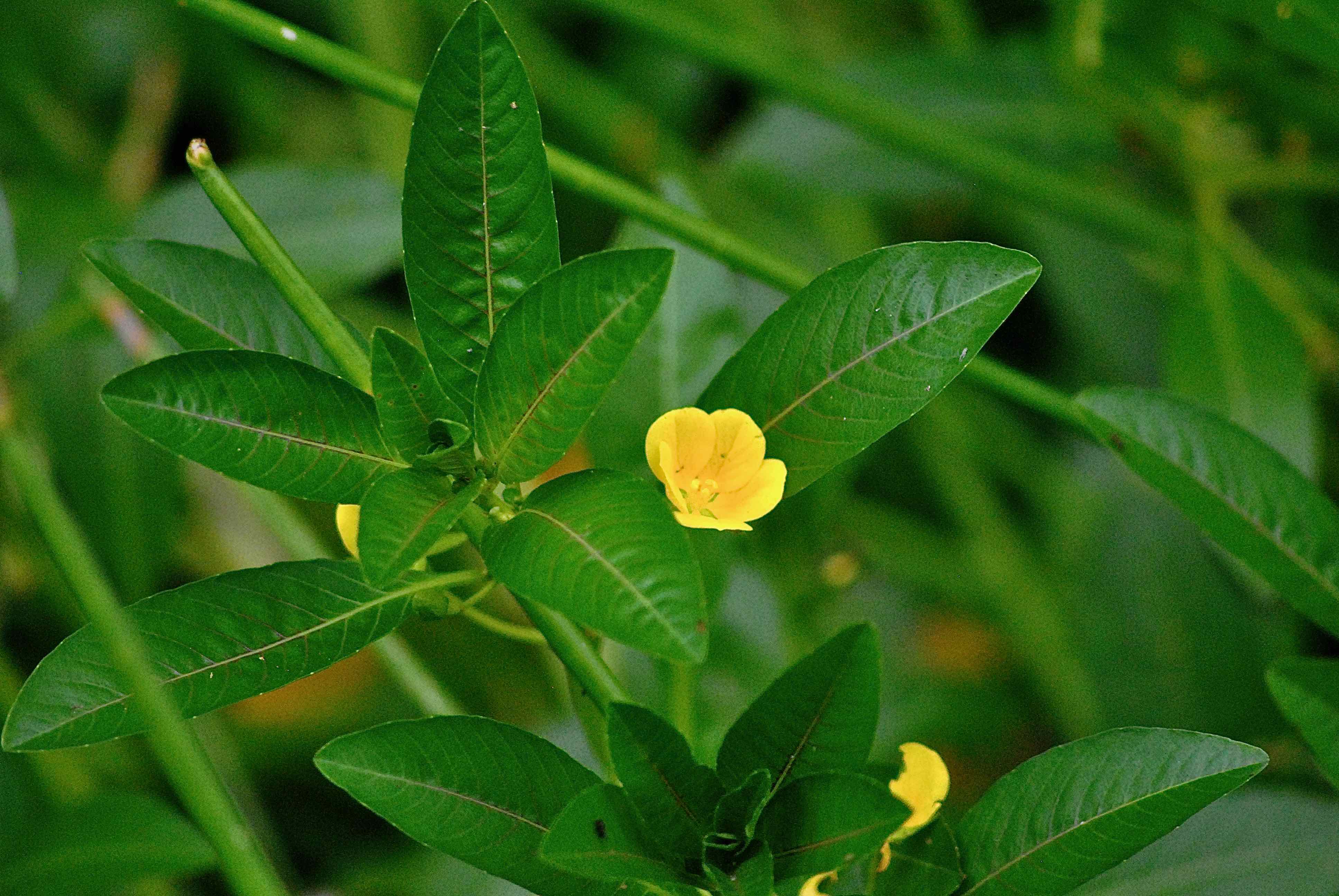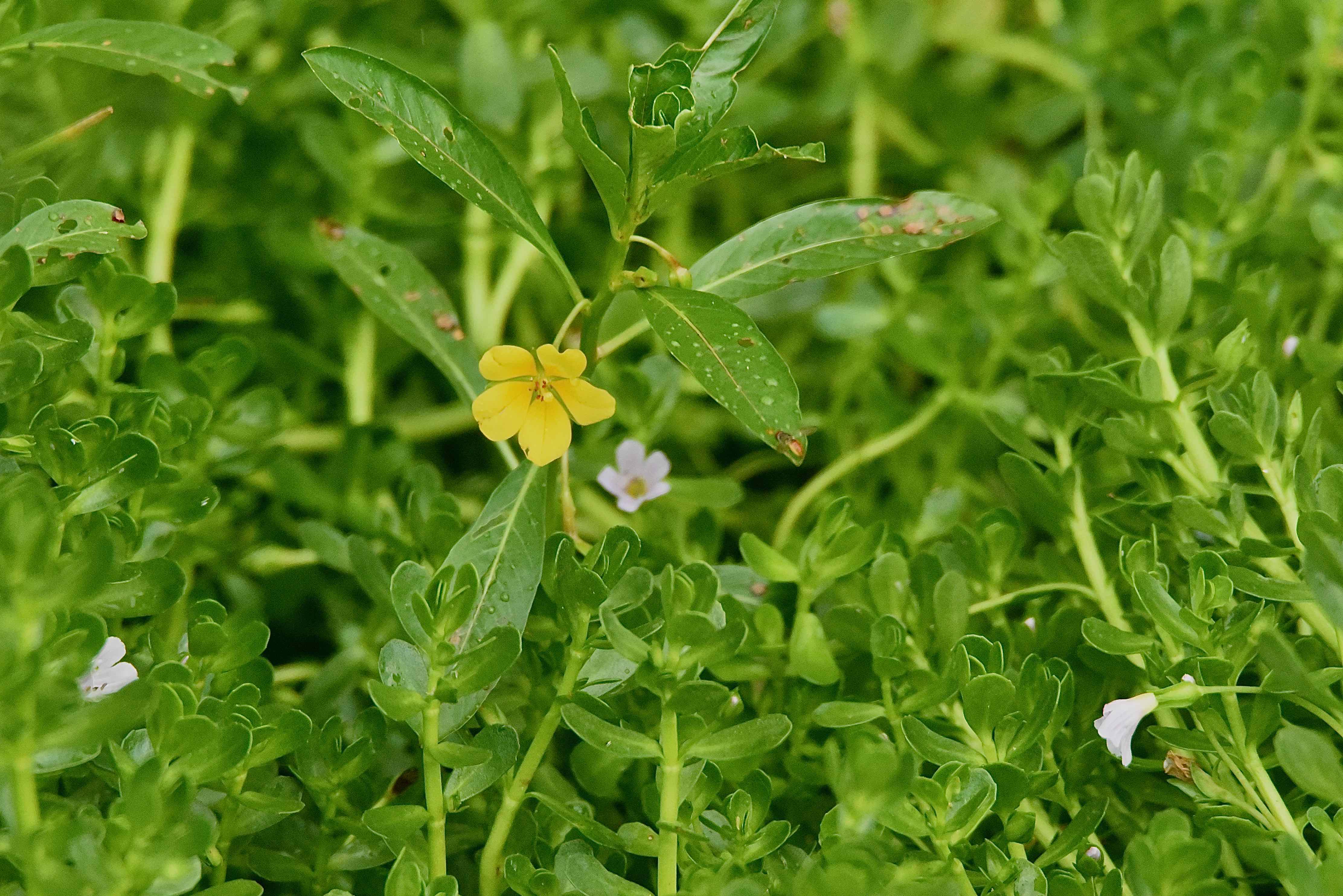
Floating primrose willow, photographed at Green Cay Nature Center, Boynton Beach, Palm Beach County, in August 2013.
Floating primrose willow, Ludwigia peploides, is a common plant in parts of the country, too common in some parts and exceedingly rare in others. South Florida falls into the exceedingly rare category.
Within the region, it's only found in Palm Beach County and in only four other counties within Florida. The Institute for Regional Conservation considers it imperiled. The IRC says the only place within the region where floating primrose willow is found are the marshes of Lake Okeechobee. The plants on this page were photographed at Green Cay in Boynton Beach, which is a man-made wetland.
Floating primrose willow is a member of genus Ludwigia, which has about 75 members mostly hailing from tropical or subtropical parts of the world. Its native range extends roughly from New York (Long Island) west to Nebraska, south to Texas and east to Florida. It's biggest concentration is along the Mississippi and Ohio River valleys.It's also native of Central America and South America and possibly Australia, says to the Invasive Species Compendium.
The U.S. Department of Agriculture's PLANTS database consides this both an introduced plant and a native.
It is an aquatic plant, a perennial, found on the edges and shallows of marshes, ponds and lakes. Floating primrose willow has bright, yellow flowers, with five petals and five green sepals showing through at the base. The sepals form a star pattern. It is a relatively low-lying, creeping plant, with thick, almost succulent stems. The leaves are arranged opposite each other along the stem and can vary in shape from oval to eliptical, and an vary in length.
As we said above, floating primrose willow can be overly abundant, especially outside its native range. Washington state considers it an invasive because of its tendency to form large, dense mats that choke out other plant species. Pennsylvania considers it an invasive as well, but it's legal status is unclear. The plant is attractive and is sold for use as a pond ornamental, which is most likely how it's spread to places where it doesn't belong. It's how it made its way to France in 1830, where it quickly established itself as one of the country's most damaging plant pests.
Thing is, it is an incredibly rapid grower, with few natural enemies outside of its native range. According to the Invasive Species Compendium, floating primrose willow can double its biomass in 15 or 20 days, eventually crowding out competitors.
But that's only the beginning of the damage it can do. It can physically choke waterways; it can reduce the amount of dissolved oxygen in the water; it can negatively change the chemistry and pH levels of the water where it grows, killing fish and invertebrates. Few animals eat it, and it creates perfect places for mosquitoes to breed. On the positive side, it is a nectar plant for butterflies and it might have potential for removing excess nutrients from waste water.
Other common names include California water primrose; creeping water primrose; creeping water primrose; floating primrose; floating primrose willow; floating water primrose; marsh purslane. Floating primrose willow is a member of Onagraceae, the evening primrose family.



